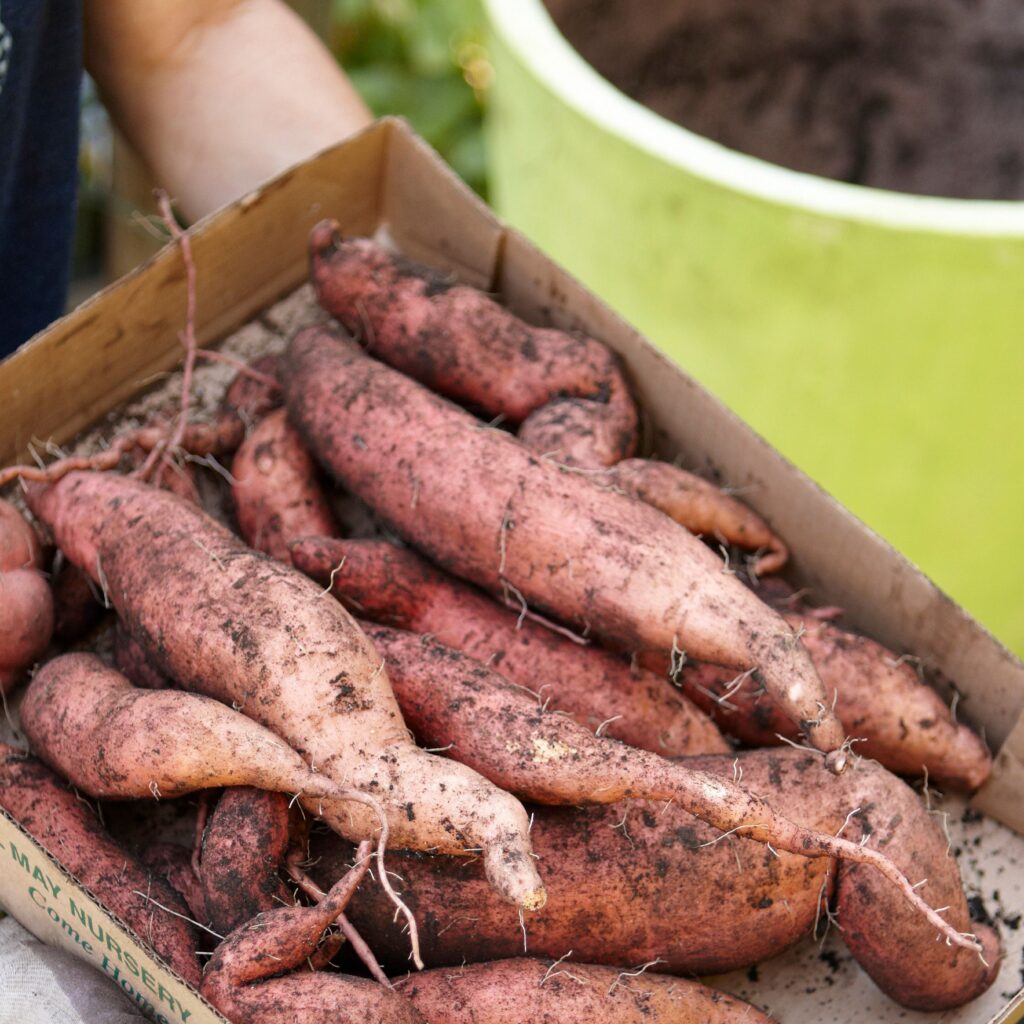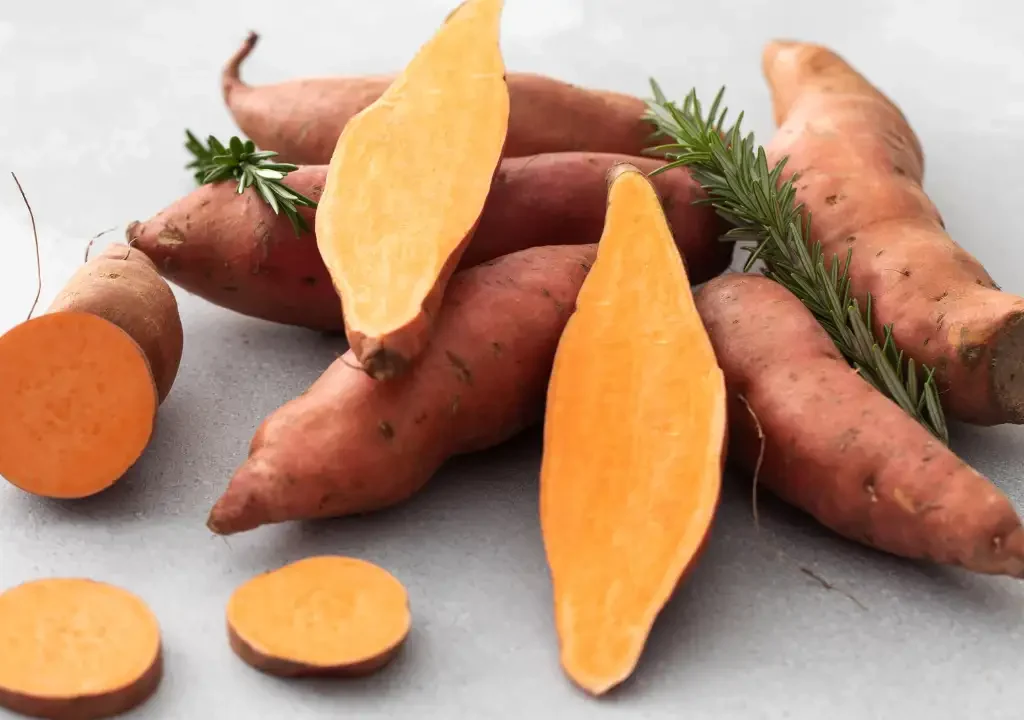Growing your own sweet potatoes might sound like a task limited to sprawling gardens or large farms—but did you know you can grow them successfully in containers? Whether you live in a small apartment or want to add a portable gardening option to your backyard, sweet potatoes thrive surprisingly well in pots with just a bit of know-how.
In this complete guide, you’ll learn everything from choosing the right container to harvesting your homegrown sweet potatoes. Let’s dig in!
Why Grow Sweet Potatoes in Pots?

Sweet potatoes (Ipomoea batatas) are warm-weather crops known for their nutritional value and versatility in the kitchen. Growing them in containers offers several benefits:
- Space efficiency: Perfect for balconies, patios, or small yards.
- Soil control: Avoid pests and soil-borne diseases.
- Mobility: Easily move the containers for optimal sunlight.
- Aesthetic appeal: The vines are ornamental and can enhance the look of your outdoor space.
Best Sweet Potato Varieties for Pots
When growing in pots, choose compact or bush-type sweet potato varieties that do well in confined spaces. Some great options include:
- Beauregard: Popular, early-maturing, and productive.
- Georgia Jet: Fast-growing and ideal for cooler climates.
- Vardaman: A bush-type variety with attractive purple foliage.
- Centennial: Disease-resistant and sweet-flavored.
Choosing the Right Pot

Container choice can make or break your sweet potato project. Here’s what to consider:
- Size: Use a container at least 12–18 inches deep and 18 inches wide per plant.
- Drainage: Ensure it has multiple drainage holes at the bottom.
- Material: Fabric grow bags, clay pots, or plastic containers all work, but fabric pots offer better aeration.
Pro Tip: You can also grow sweet potatoes in 5-gallon buckets, old barrels, or even laundry baskets lined with breathable material!
Preparing the Potting Mix
Sweet potatoes prefer loose, well-drained soil rich in organic matter. Avoid using garden soil directly in containers, as it compacts easily and may harbor pests.
DIY Potting Mix Recipe:
- 1 part compost
- 1 part coconut coir or peat moss
- 1 part perlite or coarse sand
- A handful of worm castings or slow-release organic fertilizer
This mix ensures good aeration, moisture retention, and nutrient availability—perfect for healthy root development.
How to Start Sweet Potatoes in Containers
Unlike other vegetables, sweet potatoes are grown from slips, not seeds or cuttings. Slips are shoots that sprout from a mature sweet potato. Here’s how to grow and plant them:
Step 1: Create Slips
- Cut a healthy sweet potato in half.
- Place each half partially submerged in water using toothpicks to hold them in a glass jar.
- Keep in a sunny spot for 2–4 weeks.
- Once sprouts are 4–6 inches long, twist and remove them from the tuber.
- Place the slips in water to develop roots.
Step 2: Plant the Slips
- Fill your pot with the prepared potting mix.
- Plant slips 3–4 inches deep, leaving at least 6 inches between each plant.
- Water thoroughly after planting.
Sunlight and Water Requirements

Sweet potatoes love the sun. For best growth:
- Sunlight: Place the container where it receives at least 6–8 hours of direct sunlight daily.
- Watering: Keep the soil evenly moist, especially during the first month of growth. Once established, water deeply 1–2 times per week.
- Humidity: These tropical plants enjoy warm and humid conditions—ideal temperatures range from 75°F to 90°F (24°C to 32°C).
Tip: Avoid overwatering; soggy soil can lead to root rot.
Fertilizing Your Potted Sweet Potatoes
Feeding sweet potatoes helps improve tuber formation and plant vigor.
- When to fertilize: Start after 4–6 weeks of growth.
- Best type: Use a low-nitrogen organic fertilizer (e.g., 5-10-10) to encourage root development over leafy growth.
- Application: Apply every 4–6 weeks or use slow-release pellets at planting.
Supporting Vines and Managing Growth

Sweet potato vines can grow long and trail over your balcony or deck. Here’s how to manage them:
- Support: Use small trellises, stakes, or let the vines trail over the pot edges.
- Pruning: Trim vines to redirect energy into tuber development.
- Mulching: Add a layer of straw or compost on the soil surface to retain moisture and suppress weeds.
Common Problems and Solutions
Even in containers, sweet potatoes can face issues. Here are a few common ones:
| Problem | Cause | Solution |
|---|---|---|
| Yellowing leaves | Overwatering or nutrient deficiency | Improve drainage, reduce watering, and fertilize |
| Poor tuber growth | Overcrowding or too much nitrogen | Thin out slips and switch to low-nitrogen fertilizer |
| Pest attack | Aphids, whiteflies, or weevils | Use neem oil spray or insecticidal soap |
| Rotting tubers | Poor drainage or fungal infection | Repot with fresh, well-draining soil and clean container |
When and How to Harvest
The sweet reward comes after about 90–120 days, depending on the variety and climate. Signs your sweet potatoes are ready:
- Leaves start yellowing and vines begin to die back.
- Tubers push up slightly from the soil surface.
Harvesting Steps:
- Carefully dig into the soil using your hands or a small trowel.
- Remove each sweet potato gently to avoid bruising.
- Allow the tubers to dry for a few hours in the sun.
- Cure them in a warm, humid place (around 85°F and 90% humidity) for 7–10 days to improve sweetness and shelf life.
After curing, store in a cool, dark place where they can last for several months.
Bonus Tips for Success

- Rotate position: Occasionally rotate the pot to promote even sunlight exposure.
- Companion planting: Add basil or oregano nearby to deter pests.
- Winter protection: If temperatures drop, move the pot indoors or cover it to protect from frost.
Conclusion
Growing sweet potatoes in pots is a fun and rewarding way to enjoy homegrown goodness even in limited spaces. With the right container, soil, sunlight, and care, your sweet potato vines will thrive and provide a delicious harvest in just a few months.
Whether you’re a gardening novice or a seasoned enthusiast, following these simple tips can help you successfully grow this nutritious crop right on your patio or balcony.
Start today, and soon you’ll be enjoying sweet, tender, homegrown sweet potatoes—straight from your very own container garden!





Leave A Comment